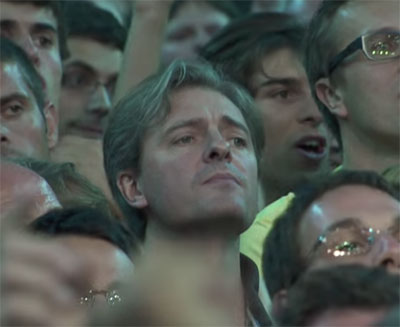Intellectual Postcards
We remember and understand ideas best when we grasp them as part of stories, experiences, or debates rather than in isolation, and with concrete examples rather than abstractions.
Try imagining a key idea as a postcard.
- On the front of the postcard--at the top of the screen or page--you provide a specific, concrete example of the idea. This example is usually represented by an image, but could be a brief, memorable turn of phrase or statement. (Be sure to provide a link or informal credit for the image.)
- On the "back" of the card--beneath the image--you elaborate and contextualize the pictured idea in four ways:
1. Give your postcard a title
2.
provide a quotation that represents the idea, and identify the source of the quotation/idea
3. Beneath the quotation, offer a close reading or analysis of the idea, explaining how the quotation relates to your image, and highlighting and defining key terms or phrases from the quotation that demonstrates how the term/phrase is pivotal to the passage's meaning.
4. In your commentary, try to place the idea in some context of other ideas (larger stories, debates, differences, cause and effects, comparisons, narratives). This larger context may be suggested by your source--in which case you should quote and cite the source on this--or it may be the product of your own observation, knowledge or imagination.
5. Be sure to cite your sources at the bottom using MLA citation and documentation format.
Example of an Intellectual Postcard

Concert spectator from the video "Dream Baby Dream" (Bruce Springsteen, The Wrecking Ball tour)
The Interiority of Sound
Quotation
"Sight isolates, sound incorporates. Whereas sight situates the observer outside what he views, at a distance, sound pours into the hearer. Vision dissects, as Merleau-Ponty has observed (1961). Vision comes to a human being from one direction at a time: to look at a room or a landscape, I must move my eyes around from one part to another. When I hear, however, I gather sound simultaneously from every direction at once: I am at the center of my auditory world, which envelopes me, establishing me at a kind of core of sensation and existence....
"[T]he phenomenology of sound enters deeply into human beings' feel for existence.... The centering action of sound (the field of sound is not spread out before me but is all around me) affects man's sense of the cosmos.... Only after print and the extensive experience with maps that print implemented would human beings, when they thought about the cosmos or universe or "world," think primary of something laid out before their eyes, as in a modern printed atlas...." (Ong 71-72)
Analysis
The expression on the concert-goer's face above exemplifies the "interiority" and incorporation that Walter Ong claims are the unique effects of sound, as opposed to to the other senses. Though the spectator's eyes are gazing at the stage "at a distance," his face registers a preoccupation with his own interior thoughts and feelings. While he is "enveloped" in the music, it is even more the case that the music is enveloped in his mind. He is, as Ong says, "at the center of...[his] auditory world," and thus "the core of sensation and existence." The effect of the music has put him in contact with a "sense of the cosmos."
Far from isolating this individual, however, this "cosmic" effect of sound is shared with others in the audience. As Ong says, "[T]he individual's reaction is not expressed as simply individual or 'subjective,' but rather as encased in the communal reaction, the communal 'soul' (45-46).
Ong's point here about the unique and powerful effects of sound is part of his larger argument for recovering the "orality of language" in present-day literary and language studies. Far from being merely a lack of literacy, orality is at the core of human language and what it can achieve.
Work Cited
Ong, Walter. Orality and Literacy: The Technologizing of the Word. London: Routledge, 1982.